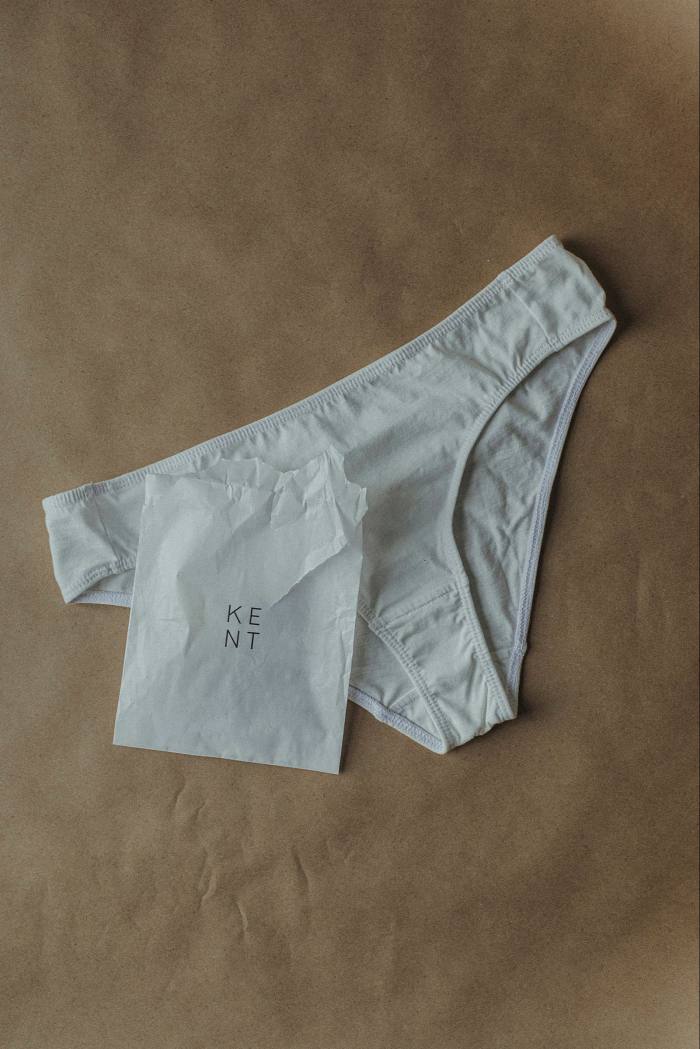"Underwear you can chuck in the composter"
What if, instead of clogging landfills at home or being shipped off to pollute a distant shore, discarded clothing could return to the earth without harming it? That’s a question Stacy Anderson, founder of underwear label Kent, is trying to answer. Kent makes organic cotton knickers that are “verified compostable” and has created a “Plant Your Pants” campaign to encourage customers to chuck their Kent underwear in the compost bin after it wears out. There, the company claims, the knickers will decompose in 90 days.
“I don’t think that we can keep consuming at our current rate,” says Anderson. “I see composting as a natural recycling process where [clothing] goes back into nature.”
Anderson is not the first to advocate compostable clothing. Swiss bag-maker Freitag launched apparel in 2014 made of hemp, flax and modal that was meant to turn into “backyard dirt” at the end of its wearable life. Swedish sportswear company Houdini composted its clothing in 2017, used the compost to grow vegetables and served them up as part of a fine-dining experience.
The next year, the US Department of Agriculture (USDA) launched its “Soil Your Undies” campaign, which encouraged farmers to bury cotton underwear in the ground and track how fast it broke down as a way of measuring soil health.
But not all materials return to the earth seamlessly. Synthetics — such as the plastics-based spandex so frequently used in underwear — take a long time to break down and can leave behind harmful microplastics as they degrade into ever-smaller pieces.

For that reason, Anderson has removed synthetics from her brand’s undergarments. Kent uses Pima cotton fabric because the longer-staple fibre has a natural “bounce”, eliminating the need for the cotton to be blended with spandex. All-natural cotton threads for the stitching are a must as well, she says. The elastic that Kent uses at the waist and legs is made of a blend of cotton and tree fibres. The brand claims that its knickers decompose, elastic and all, in about half the time it would take an avocado pit to break down. Anderson tested underwear decomposition rates at an industrial composting facility to arrive at the 90-day claim for Kent’s underwear. (She doesn’t know yet how long it takes to break down in the garden, despite advocating that customers try composting it at home.)
Still, Anderson admits that composting is not a one-size-fits-all solution for fashion’s waste woes. “[Composting] definitely works better for a smaller garment and particularly a garment like underwear that you can’t donate for reuse,” she says.
The size of the garment matters because composting is a process wherein microorganisms eat whatever’s put in the compost mix, breaking it down to its component parts. Even knickers, which are relatively small, should ideally be ripped into smaller pieces before they’re added to the compost bin, to make the process more efficient.
That means any conversation about compost as a wider fashion waste solution has to include shredding.
“We think that [composting textiles at a larger scale] definitely is possible,” says Marisa DeDominicis, co-founder of New York City-based composting organisation Earth Matter. “But getting it to a point where you’re not throwing in pieces that are too large to easily break down is the dilemma.” Despite having experimented with composting muslin scraps from the nearby Fashion Institute of Technology, Earth Matter, like most composting facilities, does not have the capacity to shred textiles at scale.
Beyond the size of the garment pieces, there’s also the question of scale when it comes to the compost operations themselves. Professional composters like Earth Matter manage their operations so that temperature and oxygen levels are ideal for the microorganisms involved in composting, so they’re able to break down organic matter efficiently.

But for clothing to have a future in these kinds of facilities, it needs to help, not hinder, the larger goals of composting organisations. Dr Adam Chambers, a climate scientist employed by the USDA, believes that clothes should add useful feedstock that contributes to the creation of good compost and should not slow down the decomposition process. If they do the latter, it’s not a solution so much as a displacement of fashion’s problem on to composters’ shoulders.
Chambers admits that keeping fashion out of landfill by turning it into natural fertiliser won’t be as simple as throwing a bunch of textiles into existing composting systems. Still, he points to wastewater treatment plants that utilise bacteria to clean water as a hopeful example of a similar principle being used at scale.
As for Anderson, she’s not claiming that composting will mean society doesn’t have to confront rampant overconsumption, or that fast fashion will become a non-issue. But she remains hopeful that returning clothing to the soil could be part of a bigger move towards taking responsibility for where our garments go when we’re done with them.
“I don’t think it’s a get-out-of-jail-free card,” she says. “But I’m excited about that end-of-life conversation, and I think composting is one part of it.”
